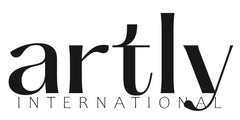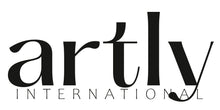Women in the Art Market 2024
The Rise of Women Artists in the Contemporary Art Market: Trends for 2024

In recent years, the art world has made strides toward addressing the historical underrepresentation of women artists, but achieving true equity remains a work in progress. The market for works by women artists is growing, propelled by a shift in institutional priorities, increasing collector interest, and support for emerging voices. However, gender-based disparities in visibility and value persist. This article explores the latest trends shaping the market for women artists in 2024 and looks ahead to what the future might hold.
Representation Growth: A Positive Trend, But Gaps Remain
Data from 2023 shows progress toward gender equity in art, with 40% of artists represented in galleries being women. This marks a modest increase from previous years and is primarily driven by primary-market galleries, where representation has reached 46%. However, in mixed primary and secondary market galleries—those that sell both contemporary and historical art—representation for women artists remains lower at 30%.
Although more galleries are recognizing the value of showcasing women’s work, there are still barriers to achieving parity in institutional spaces. Major auction houses and secondary market galleries—where artworks often reach the highest prices—continue to feature male artists predominantly, indicating that visibility does not yet translate into equivalent market value.
Market Demand and Collecting Trends
Collectors are showing increased interest in socially engaged works by women artists, focusing on themes like identity, environmental activism, and gender issues. This aligns with a broader cultural shift, as both buyers and galleries seek art that resonates with contemporary political and social issues. Indigenous and minority women artists have also gained significant attention at recent international exhibitions, including the Venice Biennale.
Furthermore, collectors are increasingly turning to online platforms and smaller galleries, which provide greater access to a diverse pool of emerging talent. This trend benefits women artists by opening doors outside of traditional market structures and auction houses, which have historically been harder to penetrate.
Sales Performance: Progress and Challenges
While galleries have reported increased sales of works by women artists, auction results still reveal a significant value gap. The most expensive works sold at auction are overwhelmingly by male artists, and only a small fraction of record-breaking sales involve women. This disparity reflects both historical biases and the challenges women face in achieving comparable levels of market prestige.
However, optimism is growing across the art market. According to recent surveys, 54% of dealers representing women artists expect an increase in sales in 2024, compared to just 8% who anticipate a decline.
The rise of mid-range markets—with artworks priced between $250,000 and $500,000—offers promising opportunities for women artists. Galleries operating in this segment have seen steady sales growth and report higher optimism about online sales. This mid-range market may serve as a critical space for women artists to build momentum, with increased visibility contributing to higher valuations over time.
Institutional Shifts: Museums and Grants for Women Artists
Museums and institutions play a vital role in driving demand for artworks by women. In recent years, many museums have launched retrospective exhibitions dedicated to historically overlooked female artists. These exhibitions not only elevate individual artists but also create ripple effects in the market by increasing public interest and collector engagement.
Grant programs and art prizes targeting women artists have also grown in number, providing financial support to new talent. These initiatives help emerging women artists gain visibility and build the reputations necessary to succeed in both gallery spaces and the broader market. However, sustained institutional support is necessary to ensure that these gains translate into long-term market shifts.
Digital Spaces and New Avenues for Women Artists
The growing importance of e-commerce platforms has given women artists additional opportunities to reach collectors. In the aftermath of the COVID-19 pandemic, more galleries have embraced online exhibitions, and buyers are increasingly comfortable purchasing artworks digitally.
Online marketplaces have played a significant role in democratizing access to the art market. These platforms allow collectors to discover and purchase works by emerging artists, many of whom are women. The shift toward digital-first strategies is likely to persist in 2024, providing new opportunities for women artists to connect directly with buyers.
Despite progress, achieving true gender equity in the art world remains a challenge. Women artists have made gains in representation, but parity in terms of market value and institutional recognition is still a distant goal. The art world needs to continue fostering inclusive practices, from gallery representation to grant distribution and auction house visibility.
Conclusion: A Market in Transition
Looking forward, collaboration between galleries, museums, and collectors will be essential in sustaining the momentum for change. As more collectors prioritize works by women artists, the market may begin to close the value gap. Meanwhile, institutions can further accelerate progress by expanding the collections and exhibitions to include a more diverse range of voices.
The market for women artists is at a pivotal moment. While representation in galleries is improving and collector interest is growing, disparities in value and visibility remain entrenched. The path forward will require a collective effort from all corners of the art world, from galleries and museums to collectors and digital platforms.
By continuing to elevate the work of women artists, the art world has the opportunity to foster a more inclusive and dynamic market—one where the value of art is not determined by the artist’s gender but by the quality and impact of the work itself.
Sources:
Art Basel and UBS, The Art Market 2024
Bureau of Economic Analysis: Arts and Culture
Americansforthearts.org/research
Art Market Research Report
Image credit: Allison Clements, Memoryscapes #1.




Leave a comment